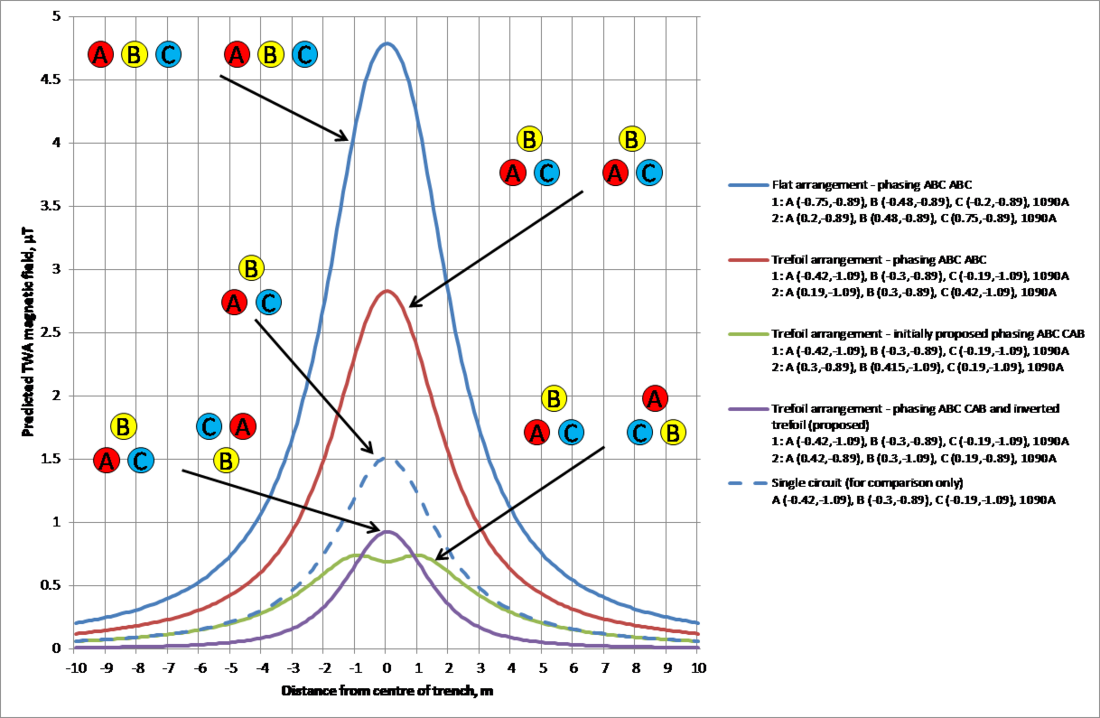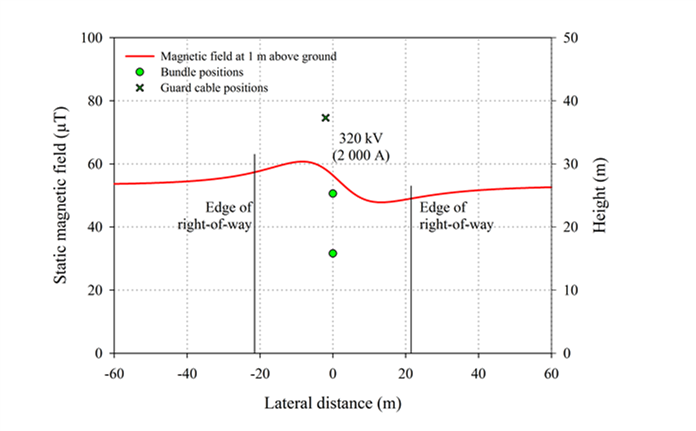Responsible management of electric and magnetic fields (EMF)
This brochure provides information to assist the electricity utility industry in managing the electric and magnetic field (EMF) issue. It discusses known health effects from exposure to EMF, the associated authoritative guidelines and how to asses compliance with the limits in those guidelines. There is a discussion on possible effects at levels below the guidelines, including the positions of key health authorities and guidance on how to effectively manage public concerns. The brochure also provides guidance on managing the risk of interference with implanted medical devices and details measures that can be used to reduce EMF where this is required.
Convenor
(AU)
J. HART
M. PLANTE (CA), F. DESCHAMPS (FR), S. NAKASONO (JP), C. WALL (AR), P. FERNANDES (PT), A. WOLLNY (DE), R. GRASS (US), A. DABIN (BE), R. ARTHUR (IE)
Corresponding Members: H. TRIPP (GB), J. SWANSON (GB), X. VERGARA (US), B. BAILEY (US), L. KORPINEN (FI), J. VARELA (PT), P. GAJŠEK (SI), L. DOMINGUES (BR), M. SOUQUES (FR), M. WALKER (NZ), T. SHIGEMITSU (JP), R. SAN MILLÁN (ES), D. GOULET (CA), K. GANESAN (IN), V. HØRLYCK (DK), D. LIEBHABER (US), G. OSTIGUY (CA)
Background
Both electric and magnetic fields occur naturally. Electric fields are produced by the local build-up of electric charges in the atmosphere associated with thunderstorms. Magnetic fields are caused by the movement of molten iron in the Earth’s core.
EMF are also produced wherever electricity or electrical equipment is in use. Powerlines, electrical wiring, household appliances and electrical equipment all produce EMF.
Guidelines based on scientific evidence have been developed to protect workers and the general public from known adverse acute health effects. The requirements to comply with specific guidelines vary between countries, regions and companies.
In most cases, EMF associated with the operation of electricity assets will be well below the guideline limits and compliance with the limits can be assumed. Exceptions could include specific occupational activities near assets such as very highly loaded conductors, air cored reactors or air cored Transformers (Figure 1).

Figure 1 – Specific compliance assessments may be required in some circumstances
There are also important safety precautions to consider in relation to workers with active implanted medical devices (AIMDs). This area requires appropriate policies, procedures and control measures within power utilities to appropriately manage the potential risk posed from high exposure to EMF in specific areas of distribution and transmission utility work environments.
Regarding possible health effects of exposure to EMF at levels below these guidelines, extensive research has been conducted since the 1960s. This includes over 450 epidemiology studies and over 1,600 laboratory studies. Based on the findings of independent authoritative public health authorities, the body of scientific research on EMF does not establish that exposure to EMF at levels below the recognised guidelines cause or contribute to any adverse long-term health effects. However, the possibility cannot be completely ruled out.
In 2001 the International Agency for Research on Cancer (IARC) classified power-frequency magnetic fields as “possibly carcinogenic” and that classification remains. Given the high standing of IARC, this classification often forms the main argument of opponents.While the phrase “possibly carcinogenic” can be interpreted in a manner that triggers concern, the underlying reasons for selecting this classification are more reassuring and consistent with the conclusions reached by other authoritative reviews.
Concerns are also amplified by the way people perceive risks and the amount of publicly available information (much of it incorrect) freely available on the internet.
Several countries and regions have adopted precautionary policies and, in some cases, arbitrary limits below the recognised guideline limits. The World Health Organization’s advice in relation to such practices is that policies based on the adoption of arbitrary low exposure limits are not warranted. However, there are times when EMF mitigation measures may be required (Figure 2). Examples include complying with guideline limits or local laws, responding to concerns from the public and facilitating public acceptance of new installations.

Figure 2 – The phasing and arrangement of cables and conductors can significantly alter the magnetic field profile
Adopting EMF mitigation measures in the name of prudence or precaution should be carefully considered and supported by effective risk communication. Such measures should not unduly compromise other issues and it cannot be said that they will result in any demonstrable health benefit. If not managed effectively, the application of prudence or precaution may be seen by the public as confirmation that the utility believes that EMF are likely to be harmful.
Regardless of the extensive research and numerous authoritative assessments, some members of the public have genuine concerns about potential effects of EMF on their families’ health and potential environmental effects.Dealing with these concerns requires a genuine acknowledgement of the concerns and a factual, open and honest approach.
Purpose and scope
The purpose of the new technical brochure is to provide common, industry-wide information related to electricity distribution and transmission utility infrastructure to assist in managing the EMF issue.
The technical brochure is aimed at engineers and professionals within the industry who understand electricity transmission and distribution engineering principles. The content is industry specific, and at times can be technically complex. It is not intended as a brochure for the general public.
The brochure is applicable to power-frequency (50/60 Hz) EMF from AC sources and static EMF (0 Hz) from DC sources. It is focused on sources owned or operated by the electricity distribution and transmission industry. The brochure applies to both general public and occupational exposure situations associated with electricity infrastructure.
Section 2 of the brochure provides background information about EMF and examples of typical exposure situations from electricity infrastructure (Figure 3) and other sources.

Figure 3 – Magnetic field profile from a DC overhead transmission line superimposed onto the earth’s magnetic field
Sections 3, 4 and 5 discuss the scientific research on EMF, international guidelines and limits and methods for assessing compliance with those exposure limits.
Sections 6 addresses managing potential interference with medical implants.
Section 7 covers topics of public concern, precaution, key position statements and effective communication with the public.
Section 8 provides options for reducing magnetic fields from both powerlines and substations.
The brochure is not intended to cover Radio Frequency (RF) sources or sources within industrial, commercial and residential premises such as industrial equipment, electrical appliances or metering.
As EMF rules and regulations vary in different regions, the guidance provided within this brochure should be considered as appropriate based on local circumstances.
Conclusion
The electricity industry has been responsibly managing the EMF issue since the early 1980s. However, many key industry personnel have retired or moved on. This combined with the worldwide trend for downsizing and increased staff turnover has resulted in a reduction of knowledge and expertise around responsible EMF management.
The issue of EMF remains an important issue for industry in terms of actual risks, possible risks and misinformation. The continued responsible management of the EMF issue is critical for ensuring the safe, reliable and cost-effective supply of electricity and maintaining the trustworthiness of the utility and the electricity industry as a whole.
The brochure pulls together and builds on the work of many industry experts over the years, capturing lessons learnt and information accumulated. It provides a comprehensive and valuable resource for those responsible for managing the EMF issue, both today and into the future.





